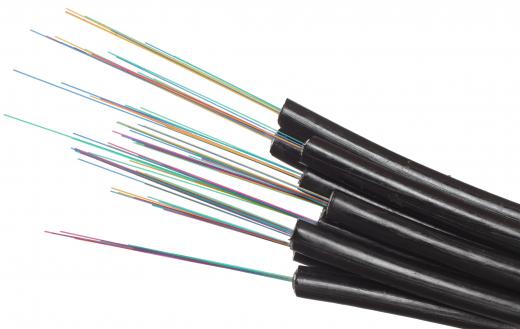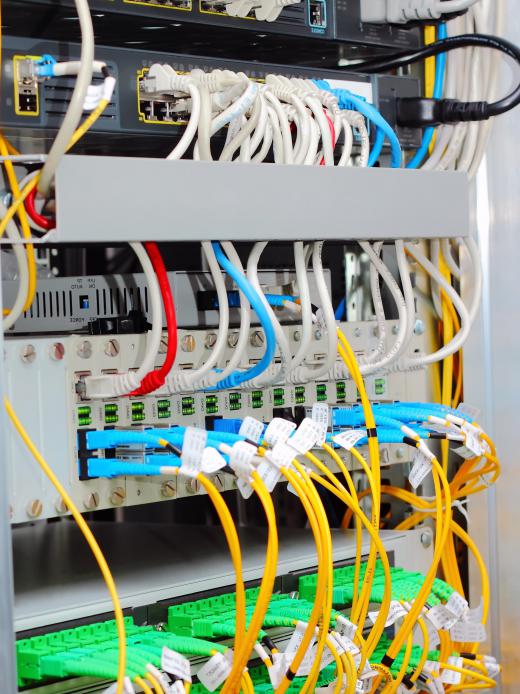Fiber-optic tools are instruments used by technicians in the telecommunication industry to work on to fiber-optic cables and equipment. Some of the fiber-optic tools are used for installation and others are used for repair projects. These fiber-optic tools range from fiber-optic testing equipment to splicing tools.
There are certain fiber-optic tools that are necessary for the installation of fiber-optic cables. When workers are preparing a site to put in fiber-optics, they will need the fiber-optic cable, buffer cables, optical connectors and splicing tools. Other tools used in the installation process consist of a pulling fixture to pull the cable, measuring tape and safety glasses. Technicians also use high-visibility warning signs to alert people not to dig near buried fiber-optic cable.

Technicians are never without fiber-optic testing equipment, which consists of tools such as a fiber-optic identifier and micropulse continuity tester. These tools use lasers and low beeper sounds to find breaks in fiber-optic cables and detect signals. By using non-invasive techniques to inspect fibers, there is little risk of damaging the ultra thin cables.

One crucial type of fiber-optic tools used by professionals in this business is a fiber-optic test and restoration kit. Technicians use the components in this kit to quickly diagnose and fix problems that can shut down fiber-optic networks. Most restoration kits include an inspection scope to magnify breaks in fibers, a light source with visual detectors and alcohol coated swabs to wipe down connectors.

After the fiber-optic installation is complete, one of the fiber-optic tools needed to finish the project is fiber-optic enclosures. Depending on the project, some enclosures are for indoor climates while others are suitable for outdoor weather. Some examples of fiber-optic indoor enclosure tools are wall mount and rack mount cabinets. Technicians use pole mount cable storage closures and auxiliary fiber storage cabinet outside since these are weatherproof.

Training manuals and certification tests are also necessary fiber-optic tools. Individuals who work in the fiber-optic telecommunication industry have to stay up to date on the latest techniques and tools of the trade. Companies that hire technicians for fiber-optic network repair and installation use training videos, posters and training tools for demonstration in class. In addition, there are manuals specific for fiber-optic procedures such as cable assembly and labeling fiber-optic color codes.
